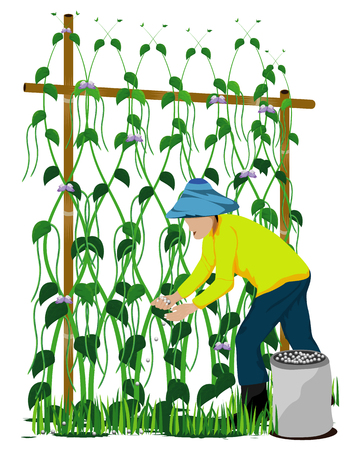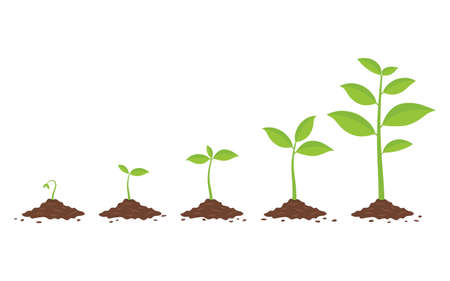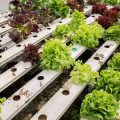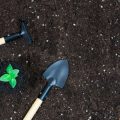Understanding Seed Starting in UK Greenhouses
Starting seeds in a greenhouse is an essential step for UK gardeners who want to maximise their growing season and achieve strong, healthy plants. The British climate is known for its unpredictable weather—cool springs, damp conditions, and occasional late frosts can make outdoor seed starting a gamble. That’s why greenhouses are so popular across the country; they offer a controlled environment where seeds can germinate safely, away from harsh elements and fluctuating temperatures. In the UK, successful seed starting means understanding both the local climate and how to adapt traditional practices for greenhouse settings. Most gardeners begin by choosing seed trays or modules that suit their available space and the types of plants they wish to grow. Using high-quality compost designed for seed starting is also crucial, as it provides the right balance of nutrients and moisture retention. With these basics in place, UK greenhouse growers can give their seeds the best possible start, ensuring vibrant gardens later in the year.
Essential Seed Starting Equipment
To ensure success when sowing seeds in a UK greenhouse, having the right equipment is key. Here’s a rundown of must-have tools and materials tailored for British gardeners. These items help you provide the best environment for your seedlings, making the process smoother and more productive.
Seed Trays and Pots
Seed trays are essential for starting off multiple seeds in a compact space. Choose from standard plastic trays, biodegradable pots, or reusable cell trays. Each type has its own advantages—plastic trays are durable, while biodegradable options are eco-friendly and perfect for direct planting.
| Type | Benefits | Best For |
|---|---|---|
| Plastic Seed Trays | Reusable, easy to clean, sturdy | General use and multiple seasons |
| Biodegradable Pots | Eco-friendly, plant directly into soil | Sensitive seedlings or zero-waste gardening |
| Cell Trays | Individual compartments, easy transplanting | Tomatoes, peppers, and delicate seedlings |
Compost and Growing Mediums
A high-quality seed compost is vital for healthy germination. Look for peat-free options to support sustainability. Good compost should be fine-textured and free-draining to prevent damping off—a common problem in damp UK conditions.
Propagators and Covers
A propagator creates a warm, humid microclimate ideal for seed germination. Basic unheated propagators suit most spring sowings, but an electric heated propagator can be a game changer during chilly British springs. Clear lids help retain moisture and warmth.
Comparison of Propagator Types
| Type | Features | When to Use |
|---|---|---|
| Unheated Propagator | No electricity needed, affordable, portable | Mild spring temperatures or hardy seeds |
| Heated Propagator | Built-in thermostat, consistent warmth | Early sowing or heat-loving crops (e.g., aubergines) |
| Dome Lids/Cloche Covers | Mist retention, simple protection from draughts | General use with seed trays or pots indoors/outdoors |
Misting Bottles and Watering Cans
A gentle misting bottle helps avoid disturbing delicate seeds when watering. For larger trays or established seedlings, choose a watering can with a fine rose attachment to prevent soil displacement.
Dibbers, Labels and Markers
Dibbers make sowing easier by creating uniform holes for seeds. Labels and waterproof markers are indispensable—don’t rely on memory! Use weatherproof labels to withstand the damp British climate.

3. Eco-Friendly and Reusable Options
For UK greenhouse gardeners who are passionate about sustainability, choosing eco-friendly seed starting equipment is a thoughtful way to nurture both your plants and the planet. Biodegradable pots made from materials like coir, peat-free fibre, or compressed paper are increasingly popular across the UK. These pots can be planted directly into the soil, reducing transplant shock for young seedlings and minimising plastic waste—a win-win for you and the environment.
Many British gardeners are also turning to trays and modules crafted from recycled plastics or sturdy materials designed for repeated use. Investing in high-quality reusable trays not only lowers your long-term costs but also helps reduce landfill waste. When selecting these products, look for options labelled as recycled or recyclable, and check that they are BPA-free for safe food growing.
Another sustainable tip is to repurpose household items—egg cartons, yoghurt pots, or even loo roll tubes make excellent makeshift seed starters. This approach appeals to the practical British ethos of “make do and mend” while keeping your gardening budget in check. By opting for eco-friendly and reusable solutions, UK gardeners can ensure their greenhouse routines reflect a commitment to greener living without compromising on plant health or growth.
4. Tips on Heating and Lighting
Unpredictable British weather can make seed germination tricky, even in a greenhouse. To give your seeds the best start, it’s wise to consider both heating and lighting options suitable for UK conditions.
Choosing Supplementary Heating
Greenhouses often require extra warmth during early spring or cold snaps. Below is a quick comparison of common heating methods for UK greenhouse gardeners:
| Heating Type | Pros | Cons | Best For |
|---|---|---|---|
| Electric Propagator Mats | Easy to use, energy-efficient, localised heat | Limited area covered, needs power supply | Small trays or pots, beginners |
| Greenhouse Electric Heaters | Heats larger space, thermostatic control available | Higher running costs, requires ventilation | Larger greenhouses, established setups |
| Paraffin Heaters | No electricity needed, portable | Less precise control, emits moisture and fumes | Allotments, off-grid locations |
| Ceramic Fan Heaters | Quick heat-up, adjustable settings | Noisy, needs safe placement | Sheds, small greenhouses |
Supplementary Lighting Advice
The UK’s short days and overcast skies can limit natural sunlight. Supplemental grow lights help maintain healthy seedlings. Consider these points:
- LED Grow Lights: Energy-efficient, long-lasting and cool-running—ideal for most home greenhouses.
- T5 Fluorescent Tubes: Good light spread for trays of seedlings; affordable but slightly higher running cost than LEDs.
- Timers: Use timers to ensure seedlings receive 12–16 hours of light daily for robust growth.
- Distance: Keep lights 10–20cm above seedlings to prevent leggy growth.
Practical Tips for Success in the UK Climate:
- Aim for a minimum temperature of 15°C (59°F) in your propagating area.
- Monitor both air temperature and soil temperature using digital thermometers.
- If heating costs are a concern, insulate your greenhouse with bubble wrap or thermal fleece.
- Position seedlings where they’ll get maximum natural daylight but supplement as needed on dull days.
- Avoid overheating—ventilate your greenhouse on milder days to prevent fungal issues.
By combining effective heating and lighting solutions tailored to UK weather patterns, you’ll create the perfect environment for reliable seed germination and strong early plant growth.
5. Where to Buy Seed Starting Equipment in the UK
Finding quality seed starting equipment is key for successful greenhouse gardening in the UK. Fortunately, there are several trusted British retailers and suppliers—both online and on the high street—that cater specifically to greenhouse gardeners.
Reputable Online Shops
For convenience and variety, many gardeners choose online shopping. Crocus is a favourite among UK growers, offering a wide range of seed trays, propagators, and compost. Gardening Express and Greenhouse Sensation also provide excellent seed starting kits and accessories tailored for greenhouse use. For eco-friendly options, The Organic Gardening Catalogue stocks sustainable pots and peat-free composts.
High Street Garden Centres
If you prefer to see products before buying, visit your local Dobbies, Notcutts, or Blue Diamond Garden Centres. These shops often carry reliable brands like Stewart and Garland for seed trays, heated propagators, and potting mixes suitable for UK climates. Staff can offer valuable advice on the best choices for your specific greenhouse setup.
Specialist Suppliers
For those seeking professional-grade equipment, specialist retailers such as Tamar Organics or Suttons Seeds supply top-quality propagation tools and seeds selected for UK conditions. These suppliers often offer expert guidance on starting seeds in greenhouses, including tips on timing and care.
Supporting Local Independent Shops
Your local independent garden centre or allotment society shop is another great place to source seed starting gear. Not only will you find essential supplies, but you’ll also support your community and benefit from local expertise on what works best in your area.
A Few Tips When Shopping
Always check product reviews and seek out brands known for durability and performance in British greenhouses. Whether shopping online or locally, look for suppliers that offer clear information about their products’ suitability for greenhouse use and UK weather conditions. This careful selection ensures you start your growing season with the best possible foundation.
Care and Maintenance of Your Equipment
Proper care and maintenance of your seed starting equipment are essential for successful greenhouse gardening in the UK. By following a few simple steps, you can keep your tools in top condition, ensuring healthier seedlings and saving money over time.
Cleaning Your Seed Starting Gear
After each use, wash trays, pots, and tools with warm soapy water to remove soil and plant residue. Use a soft brush for stubborn dirt, and rinse thoroughly. For added protection against plant diseases common in British greenhouses, soak containers in a diluted solution of household disinfectant or white vinegar for 10 minutes before rinsing again.
Drying and Storing Equipment
Allow all items to air dry completely to prevent mould and mildew growth—a frequent concern in the UKs damp climate. Once dry, store your equipment in a clean, dry shed or greenhouse cupboard. Stack trays and pots neatly to save space, keeping smaller items like labels and dibbers together in boxes or drawers.
Prolonging the Life of Your Tools
Inspect your gear regularly for cracks or signs of wear. Repair minor damage promptly to avoid needing replacements. For metal tools like trowels and pruners, wipe blades with an oily rag after cleaning to prevent rust. Wooden handles benefit from an occasional rub with linseed oil, especially as British weather can be unforgiving.
Seasonal Checks
At the end of each growing season, give your equipment a thorough clean and check. This is also a good time to sharpen cutting tools and replace any worn-out seed trays or propagator lids.
Staying Organised
Label storage boxes clearly and keep an inventory of your supplies. Being organised makes it easier to find what you need when sowing season arrives again, helping you start strong every spring.
By caring for your seed starting equipment with these simple routines, you’ll enjoy smooth growing seasons year after year—and your UK greenhouse will always be ready for new beginnings.


